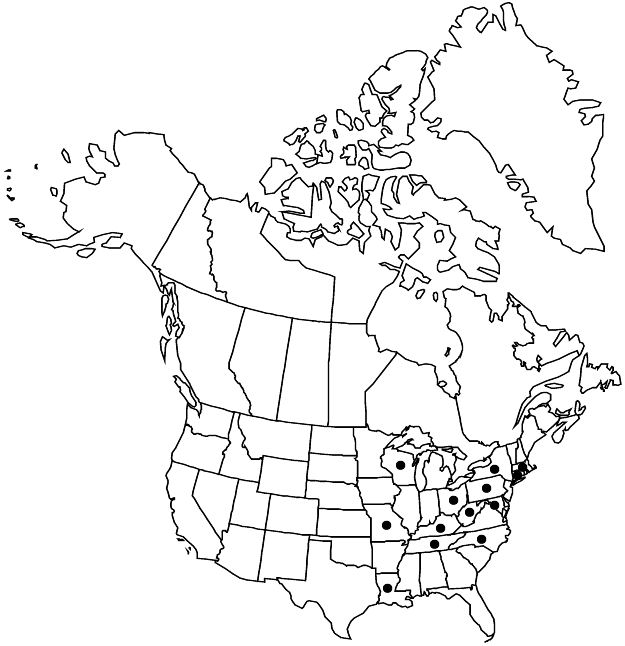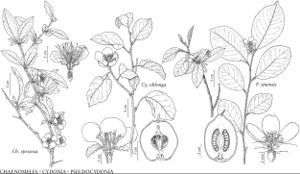Difference between revisions of "Chaenomeles speciosa"
Jap. J. Bot. 4: 331. 1929.
FNA>Volume Importer |
FNA>Volume Importer |
Revision as of 20:38, 24 September 2019
Shrubs, 2–20 dm. Branches purplish brown or blackish brown, smooth (not verrucose with age). Leaves: stipules of vegetative branches usually reniform or suborbiculate, rarely ovate, to 1 cm, margins serrate, teeth triangular, apex acute; petiole 5–10 mm; blade ovate, elliptic, or narrowly elliptic, 3–9 × 1.5–5 cm, base cuneate to broadly cuneate, margins serrate, apex obtuse to acute, abaxial surface glabrous or hairy on veins. Flowers 30–50 mm diam.; sepals suborbiculate, rarely ovate, 3–4 mm; petals scarlet red, rarely pinkish or white, ovate or suborbiculate, 13–24 mm; stamens 40–50, equal to petals. Pomes yellow or yellowish green, globose or ovoid, 40–60 mm diam. 2n = 34 (China).
Phenology: Flowering Apr–May; fruiting Aug–Oct.
Habitat: Vacant lots, old fields, fencerows, wastelands
Elevation: 0–500 m
Distribution

Conn., D.C., Ky., La., Mass., Mo., N.Y., N.C., Ohio, Pa., Tenn., W.Va., Wis., Asia (China), introduced also in Europe.
Discussion
Chaenomeles speciosa is cultivated as an ornamental for its showy spring flowers and, occasionally, for medicinal use. Putative hybrids of C. japonica and C. speciosa are called C. ×superba (Frahm) Rehder. They also are cultivated and may be expected to spread occasionally through the dumping of garden waste. The putative hybrids are difficult to distinguish from C. speciosa.
Selected References
None.
